RARE! WWII 1945 Original World War II “Headquarters of the Commander in Chief - U.S. Pacific Fleet” CONFIDENTIAL Operation Iceberg Okinawa Gunto Invasion Bulletin (Towns & Target Areas)
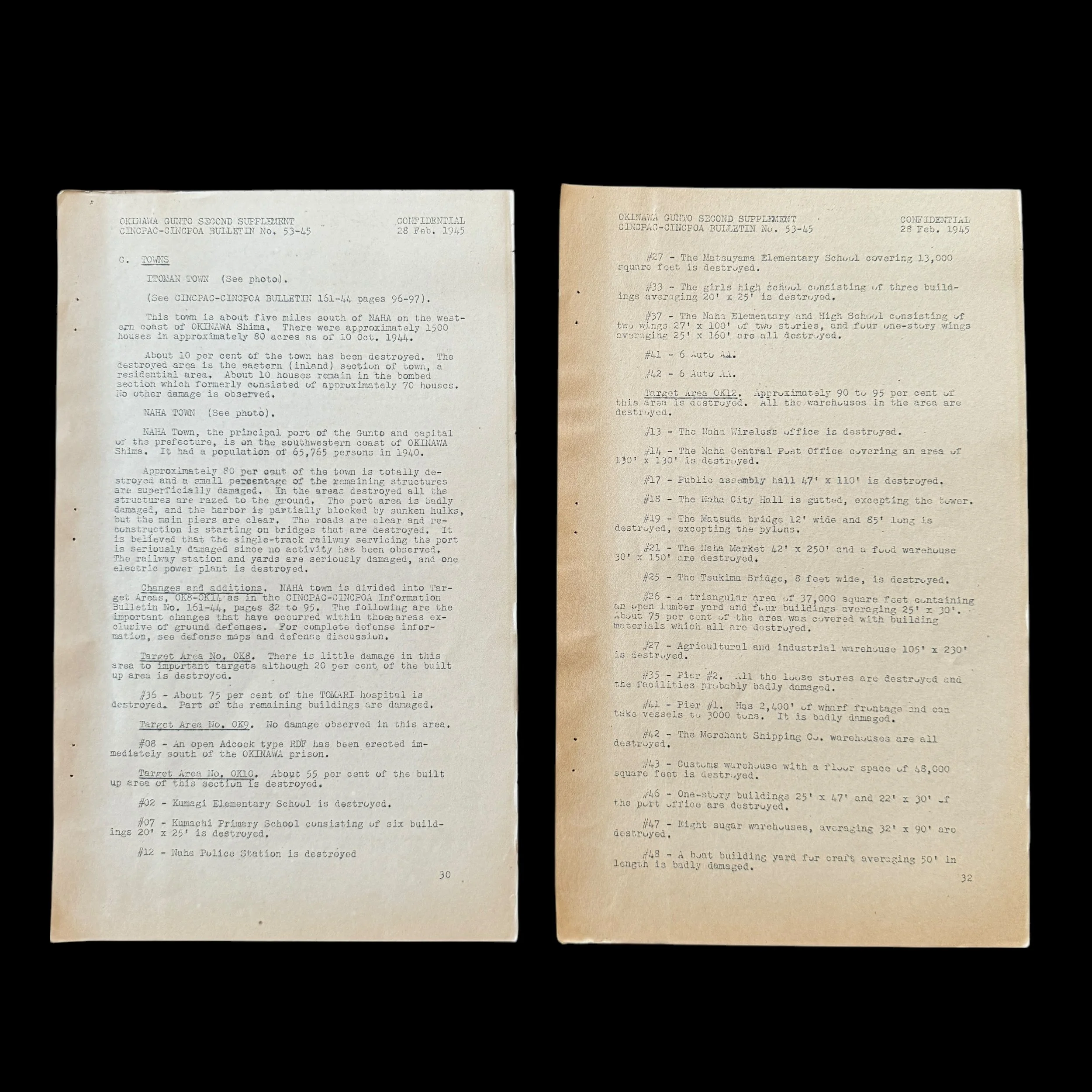

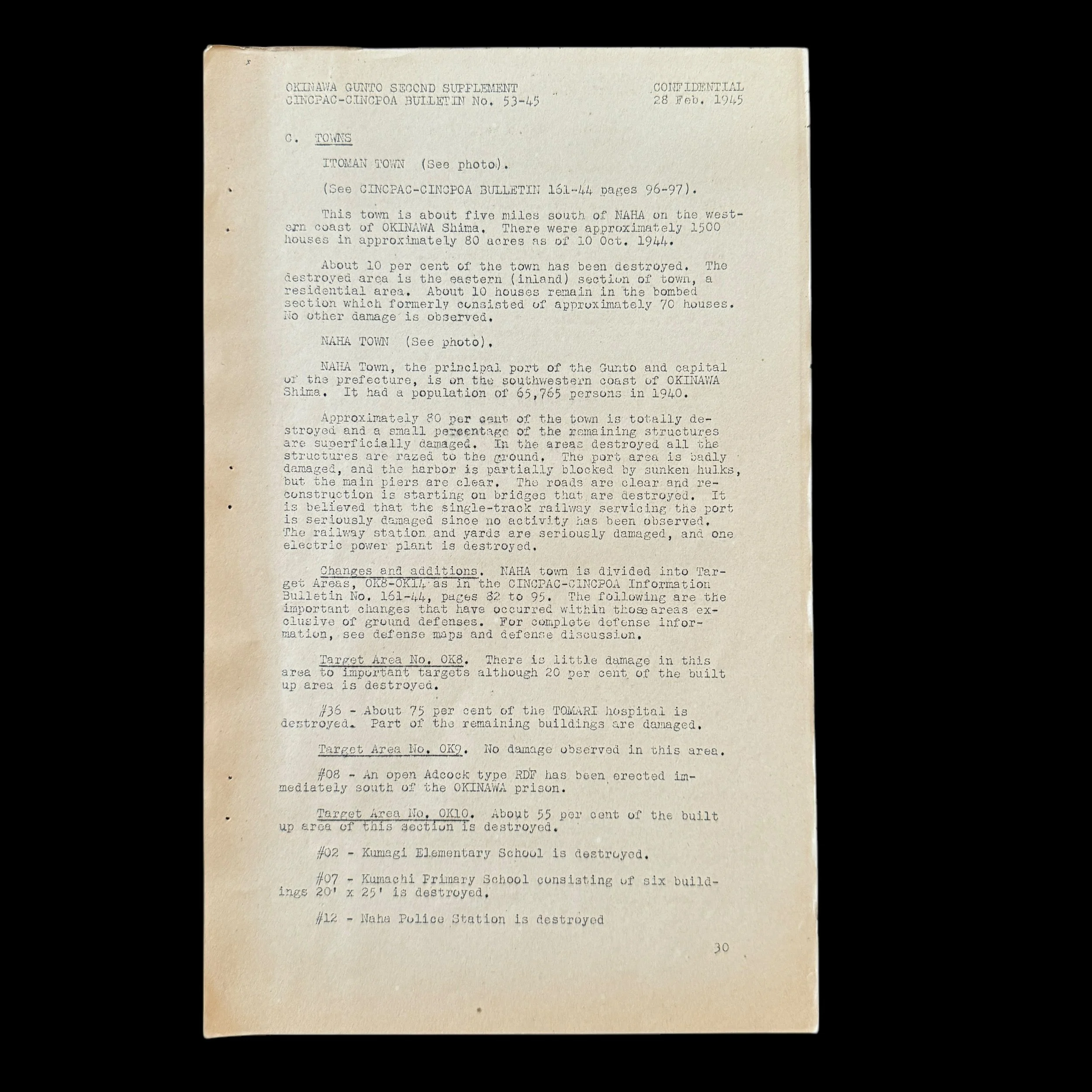
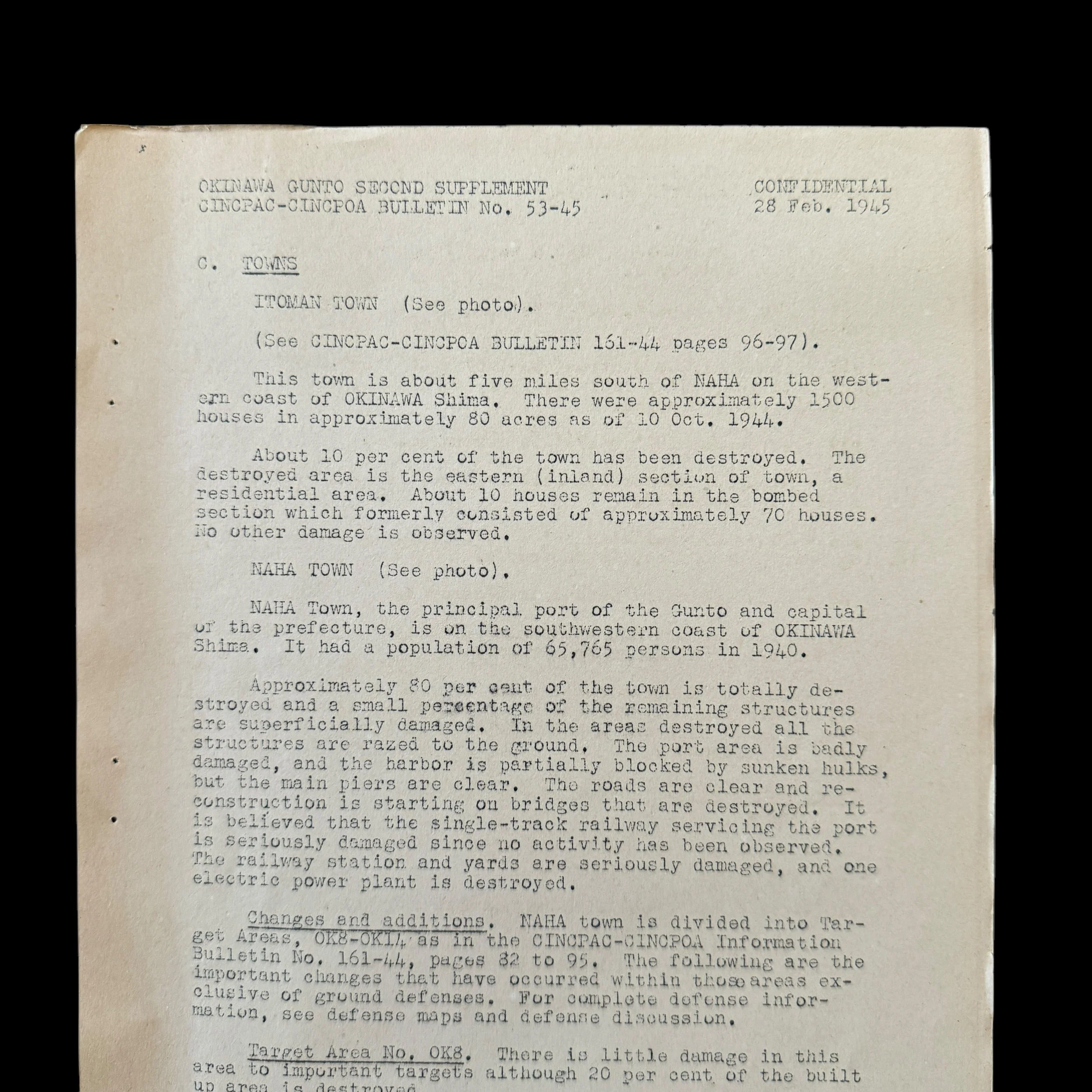
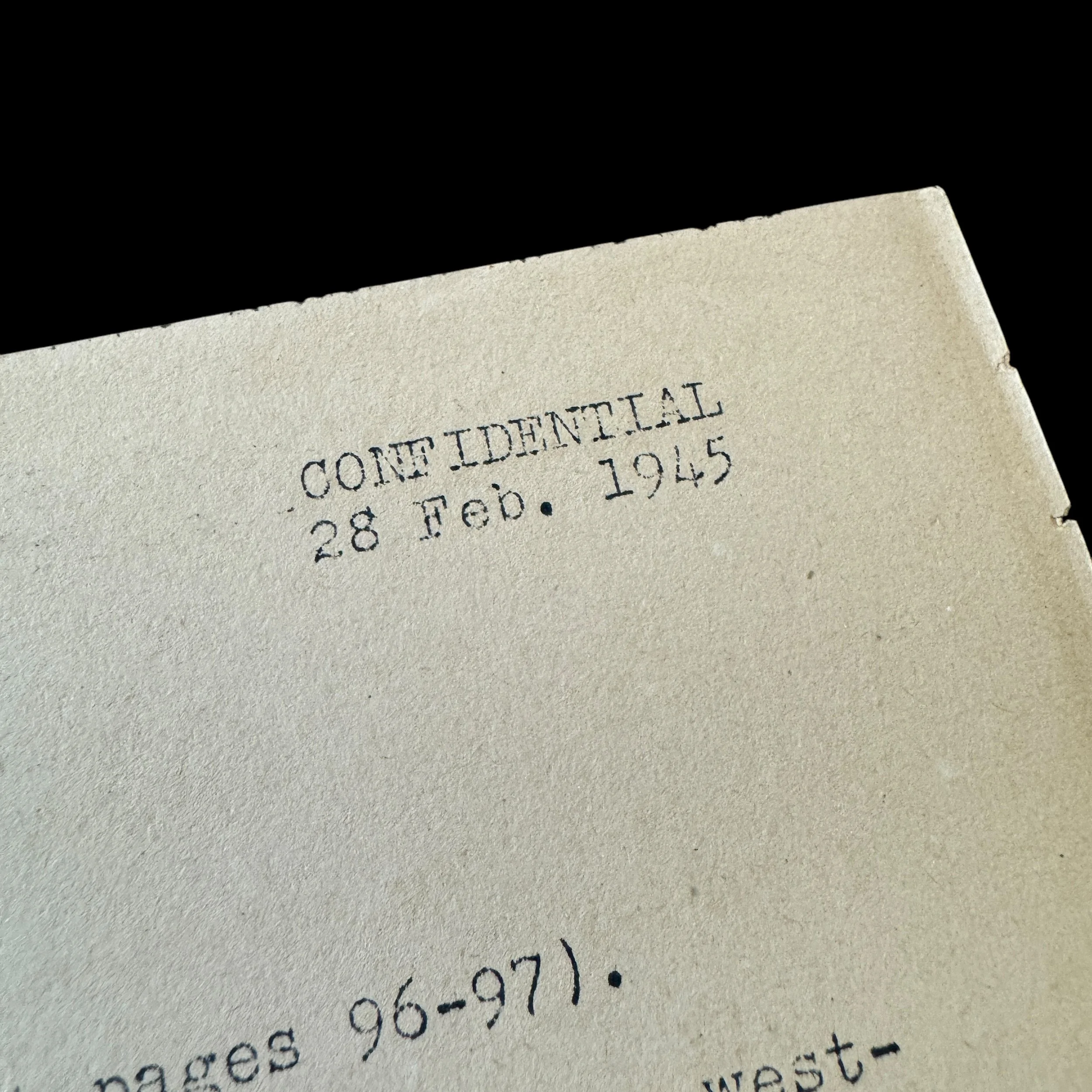
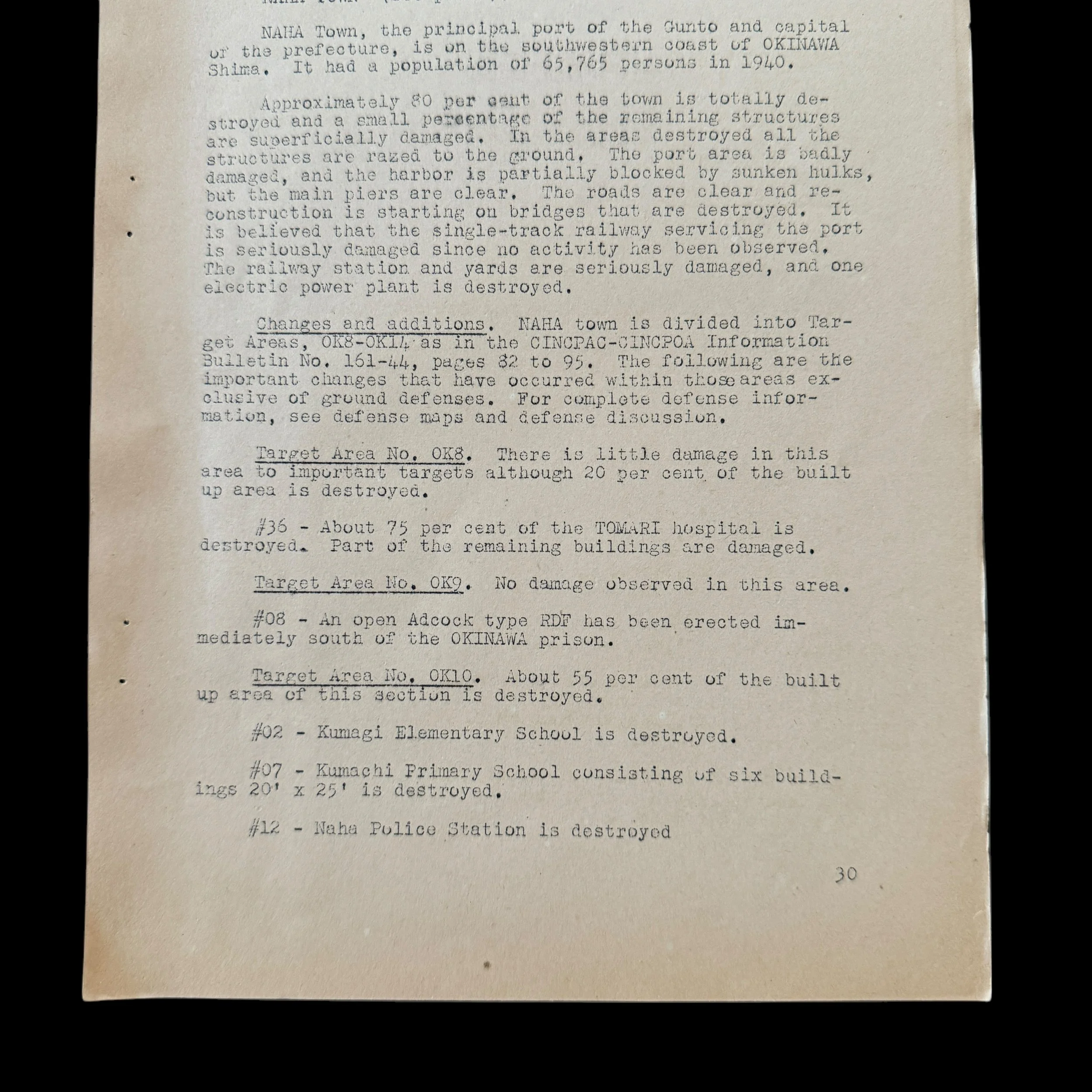
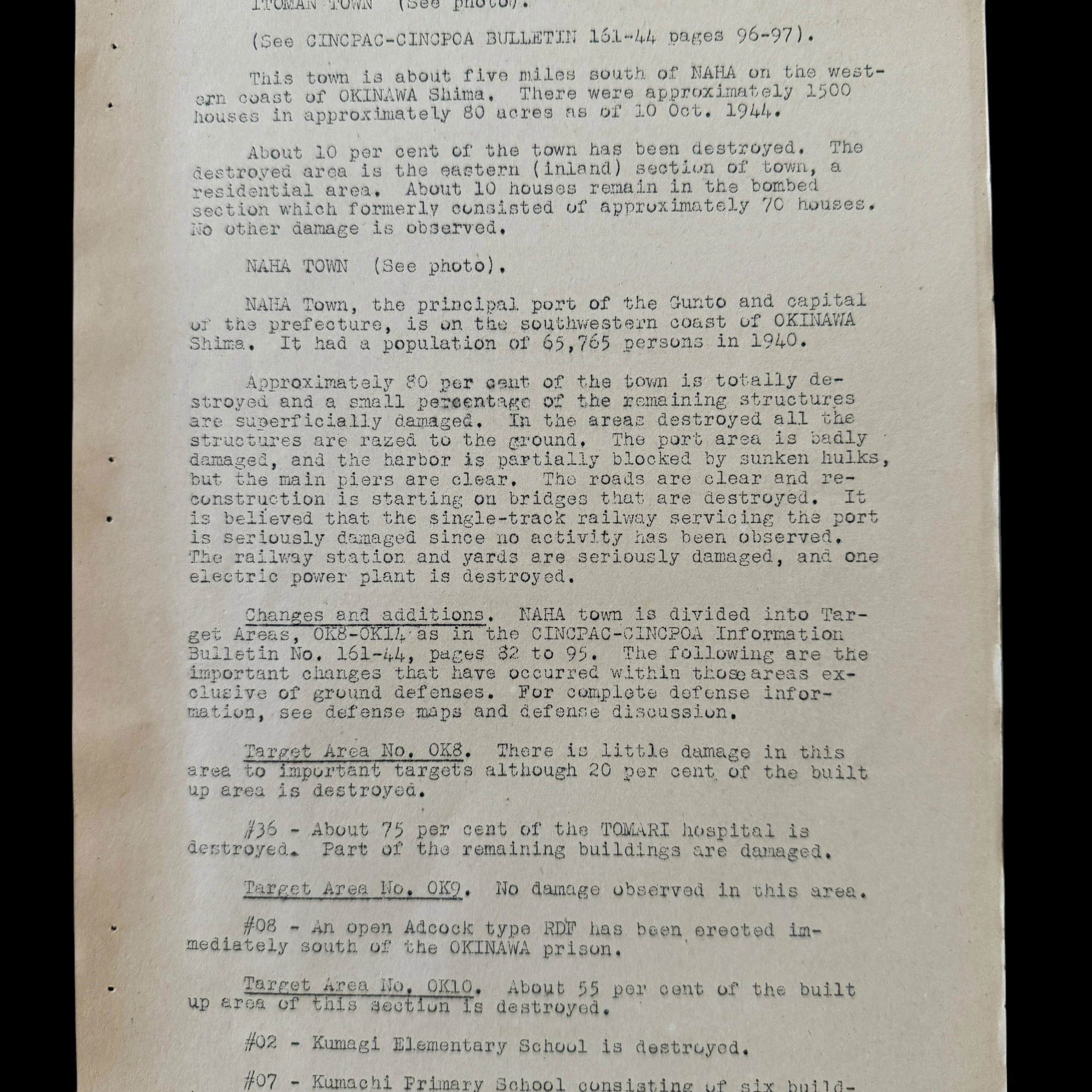

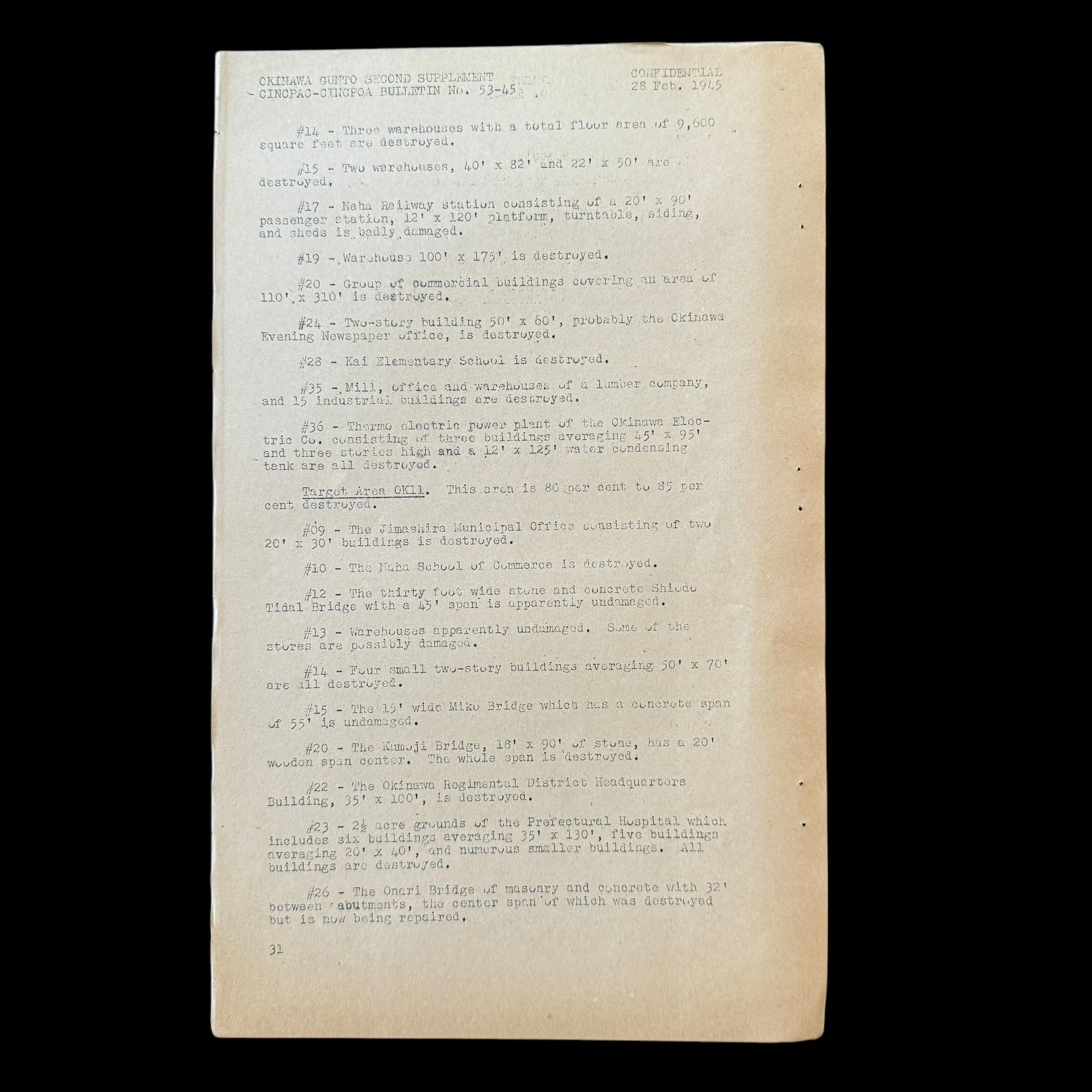
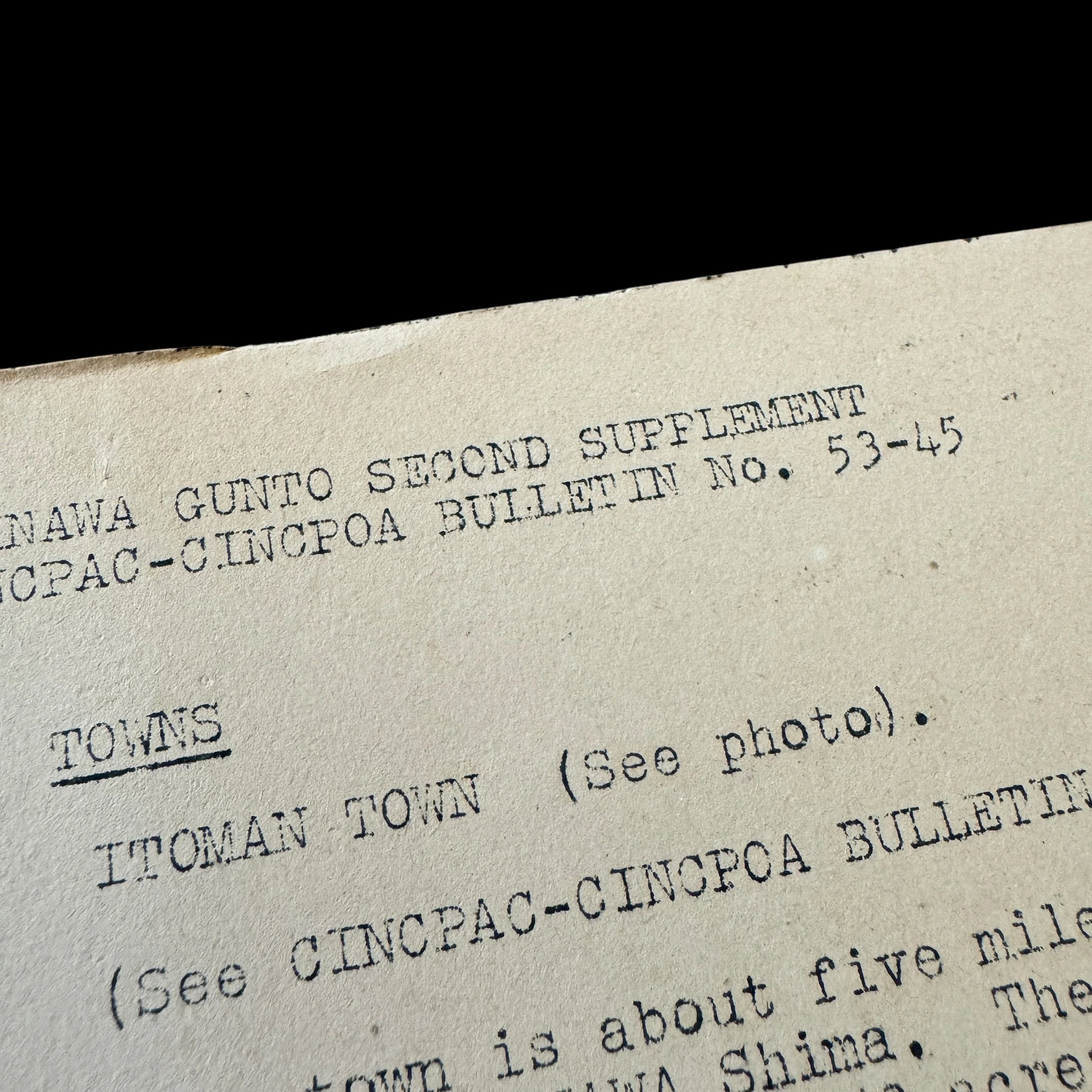

RARE! WWII 1945 Original World War II “Headquarters of the Commander in Chief - U.S. Pacific Fleet” CONFIDENTIAL Operation Iceberg Okinawa Gunto Invasion Bulletin (Towns & Target Areas)
Comes with hand-signed C.O.A. and a full historical write-up
Type: Original World War II “Headquarters of the Commander in Chief - U.S. Pacific Fleet” CONFIDENTIAL Operation Iceberg Okinawa Gunto Invasion Bulletin
Subject: Towns and Location Target Areas: Itoman Town, Naha Town, Toguchi Town
Campaign: Pacific Theater
Dated: Feb. 1945
Pages: 2 (double-sided) = 4 pages total
This rare, museum-grade World War II artifact is an original"Headquarters of the Commander in Chief - U.S. Pacific Fleet" CONFIDENTIAL Operation Iceberg Okinawa Gunto Invasion Bulletin.Produced in extremely limited numbers—fewer than 500 copies produced in 1945—these highly classified bulletins were reserved exclusively for the highest-ranking generals, officers, and intelligence officials directly involved in planning and executing the Okinawa campaign in April 1945.
Operation Iceberg, the largest amphibious assault in the Pacific Theater, required an unprecedented level of preparation and intelligence gathering. This invasion bulletin exemplifies the meticulous planning that defined the campaign, containing detailed intelligence on Japanese defensive positions and the expected strategy for Okinawa and nearby Ie Shima.
The bulletin underscores the gravity of the operation, as Okinawa was strategically critical for its proximity to the Japanese mainland. This document served as a cornerstone for the Allied effort, guiding military leaders in orchestrating the assault, which would become one of the bloodiest and most consequential battles of World War II.
Today, this artifact stands as a testament to the complexity and scale of wartime planning, offering a rare glimpse into the intelligence and strategy that shaped one of the most pivotal moments of the Pacific campaign. Its historical significance and rarity make it a treasured piece of World War II history, capturing the monumental effort behind the Allied push toward victory.
The Battle of Okinawa: Towns and Key Location Target Areas
The Battle of Okinawa (April 1 – June 22, 1945) was one of the most pivotal and bloody campaigns in the Pacific Theater during World War II. Codenamed Operation Iceberg, it was a massive Allied effort to secure Okinawa as a staging ground for the planned invasion of the Japanese mainland. The island’s towns and strategic locations played a central role in the campaign, as they were deeply integrated into the Japanese defense strategy. Towns such as Itoman, Naha, and Toguchi became key battle zones due to their strategic locations, fortifications, and the role they played in Japanese resistance.
1. The Strategic Importance of Okinawa's Towns
Okinawa's geography and infrastructure made its towns critical for both Japanese defenses and Allied operations. The island's rugged terrain naturally funneled fighting into urban and semi-urban areas, which the Japanese fortified extensively. Towns served as hubs for logistical support, troop movements, and defensive strongholds, blending into the layered defense strategy employed by the 32nd Army. Moreover, these towns were often positioned near key geographic features, such as beaches, high ground, or transportation routes, making them unavoidable for Allied forces advancing southward.
2. Key Towns and Target Areas
Itoman Town
Location and Strategic Importance:
Itoman lies in the southernmost part of Okinawa and was the site of some of the most intense fighting during the final stages of the battle. Its location made it the last stronghold for Japanese forces as they were pushed southward.
The terrain around Itoman included ridges, caves, and other natural fortifications, which the Japanese incorporated into their defenses.
Japanese Defenses:
By the time Allied forces reached Itoman, Japanese troops were entrenched in a desperate last stand. The area was heavily fortified with interconnected cave systems, bunkers, and pillboxes.
Civilians were caught in the crossfire, with many coerced into supporting the Japanese war effort or tragically used as human shields.
Allied Operations and Impact:
Intense bombardments preceded the ground assault on Itoman, with U.S. forces employing artillery, naval gunfire, and aerial strikes to weaken Japanese positions.
The town was a scene of devastating close-quarters combat, with U.S. troops encountering stiff resistance from fanatical Japanese defenders.
The fall of Itoman marked the end of organized Japanese resistance on Okinawa.
Naha Town
Location and Strategic Importance:
Naha, the capital of Okinawa, was a major urban center and a critical target for the Allies. Situated on the western coast, it served as a key administrative and logistical hub for the Japanese.
The city’s port facilities and proximity to other strategic locations made it a focal point for the Japanese supply chain.
Japanese Defenses:
The Japanese heavily fortified Naha, integrating urban structures into their defensive network. Buildings were repurposed as bunkers, while underground tunnels and caves added layers of protection.
Anti-aircraft batteries and coastal artillery were positioned to defend against naval and aerial attacks.
Allied Operations and Impact:
Naha was one of the first major urban targets for Allied forces. Bombing raids flattened much of the city, reducing its infrastructure to rubble.
The ground assault on Naha faced intense resistance, with urban combat proving particularly brutal. Japanese snipers and machine-gun nests hidden within the ruins made progress slow and costly.
The city’s destruction symbolized the heavy toll of the battle on Okinawa’s civilian population.
Toguchi Town
Location and Strategic Importance:
Toguchi, located in the northern part of Okinawa, was less prominent than southern towns like Naha and Itoman. However, it held strategic importance as a logistical point during the early stages of the battle.
Its location near the Yontan and Kadena airfields made it a key area during the initial Allied landings.
Japanese Defenses:
The defenses in Toguchi were lighter compared to the heavily fortified areas in the south. Small garrisons and scattered fortifications were used to delay Allied advances.
The Japanese relied on the natural terrain around Toguchi, including forests and ridges, to create ambush points.
Allied Operations and Impact:
Toguchi was secured relatively quickly by Allied forces as they advanced northward. The light resistance allowed the Allies to establish logistical support for subsequent operations in central and southern Okinawa.
The town suffered significant collateral damage due to bombardments and ground fighting.
3. Other Key Locations and Target Areas
Shuri Castle
Strategic Importance:
Shuri Castle, located in the southern part of Okinawa, was the centerpiece of the Japanese defensive strategy. It served as the headquarters of General Mitsuru Ushijima and the 32nd Army.
The castle's elevated position made it a natural stronghold, providing commanding views of the surrounding terrain.
Defenses and Allied Operations:
The castle was integrated into the Shuri Line, a network of tunnels, caves, and fortified positions.
Allied forces subjected the castle to relentless bombardments, eventually capturing it after weeks of fierce combat. The destruction of Shuri Castle symbolized the collapse of the Japanese defensive line.
Ie Shima
Strategic Importance:
Ie Shima, a small island northwest of Okinawa, was critical for its airfields, which could support Allied air operations.
The island’s flat terrain made it ideal for establishing forward air bases.
Japanese Defenses and Allied Operations:
The Japanese entrenched themselves in fortified positions, including pillboxes and bunkers. Despite the lack of natural defensive features, they resisted fiercely.
Allied forces captured Ie Shima after intense fighting, securing the airfields for use in the Okinawa campaign and subsequent operations against Japan.
4. The Civilian Toll
The heavy fighting in Okinawa’s towns took a devastating toll on the civilian population. Many towns, including Naha and Itoman, were heavily bombarded, leaving them in ruins. Civilians were often caught between Japanese forces and advancing Allied troops, suffering casualties from both sides. The destruction of urban centers and the displacement of civilians created a humanitarian crisis that persisted long after the battle.